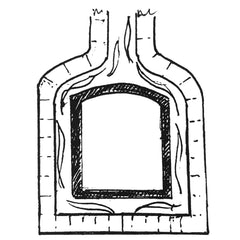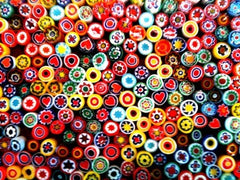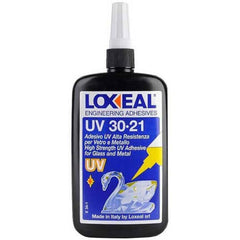
The corroso (corroded) is a type of glass whose surface is irregular to the touch due to the use of chemical agents (hydrofluoric and sulphuric acid in solution).
Technically, an "acid process" ( acidato ) is caused by the corrosion of the glass surface that provokes the disintegration of the glass: the result is the creation of a rough layer on the surface. This non-uniform layer causes an effect of partial diffusion and reflexion of the light. For its execution, solutions of hydrofluoric acid and ammonium fluoride or sulphuric acid in water are commonly used. By varying temperature, time in the bath and composition of the same, it is possible to obtain very varied effects.
The parts of the glass surface to be kept bright are plated with wax or some other organic protective agent.
This technique was introduced by the French at the beginning of the 20th century and found its first applications in Murano in the mid-30s applied to the vases and figured designed by Flavio Poli for the Seguso Vetri d'Arte firm and the series of "corrosi" wares designed by Carlo Scarpa for Venini & Co .
Scarpa created a wide range of delicate-shaped glass pieces, decorated with hot applications of corroded bosses, ribbon-shaped and relief decorations. For them he chose delicate shades, like aquamarine, amethyst, smoke-grey, straw (pagliesco) and cornelian (corniola), but also more lively colours like orange, blue, green and red.
The same technique was used in 1938 to produce martellato (hammered) glass, exhibited at the Venice Biennale that year. Clear colourless or lightly-coloured, drawing on traditional Nordic production, and produced by mould-pressing, this series was created by the joint efforts of Scarpa and Tyra Lundgren , a Swedish artist who designed for Venini animals and leaf-shaped plates, when they exhibited at the same Biennale.
Fallen progressively out of use, this technique is to this day very strictly regulated from the new anti-pollution regulation, because of the high toxic level of the materials used during the production process.



